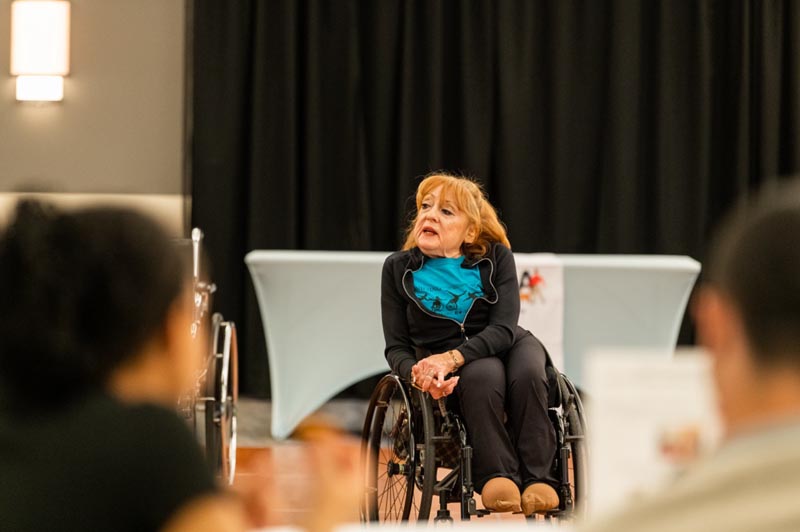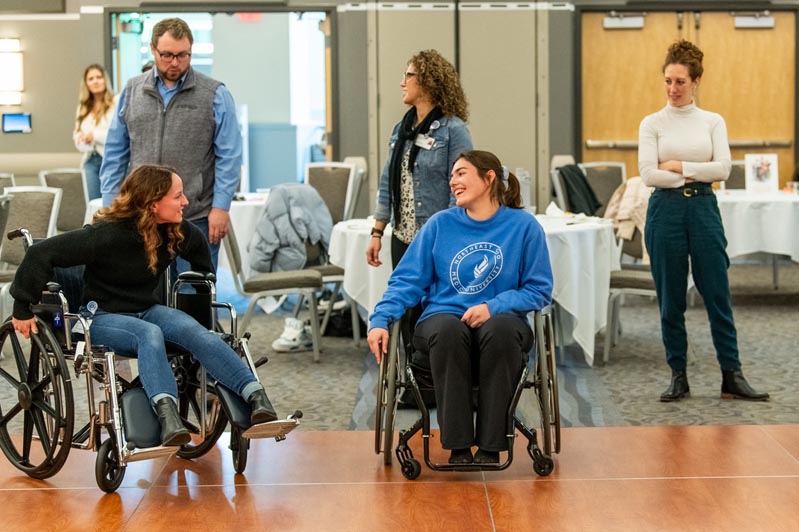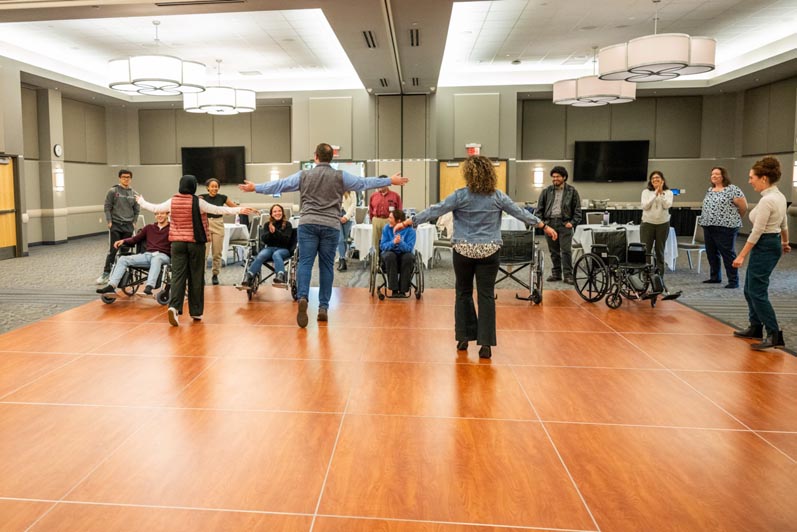Can dance help future health care professionals better understand the needs of patients with disabilities?
NADIA – the NEOMED Alliance for Disability Inclusion and Advocacy – thinks so. The student group invited Dancing Wheels to campus Nov. 9, said group president Lauren Falcon, second-year medicine student, “to educate future medical providers on how to best serve and advocate for patients with disabilities in a fun and educational way.”
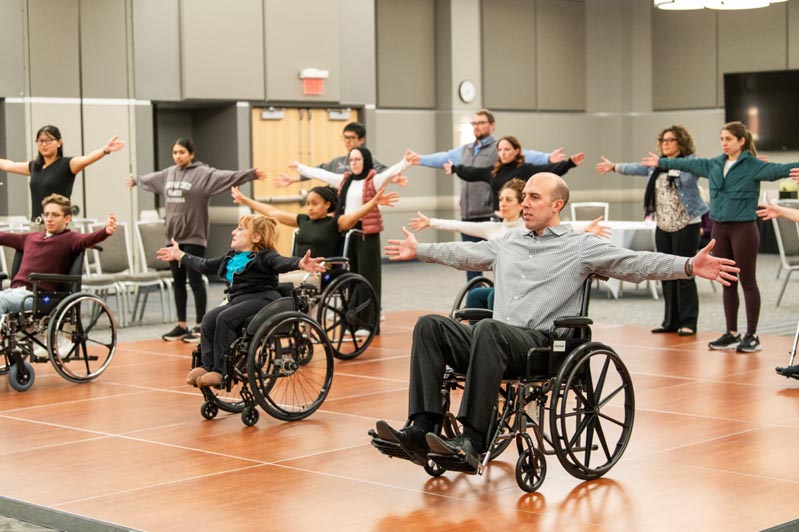
Dancing Wheels is the first professional company to unify the talents of dancers both with and without disabilities. Their founder, Mary Verdi-Fletcher, who was born with spina bifida, developed the program with a mission to offer others with disabilities full and equal access to the world of dance. The organization uses physically integrated dance, which recognizes and celebrates how dance is expressed by people with all abilities using adaptive techniques. This outlet gives those with disabilities the opportunity to express their artistry and explore their creativity.
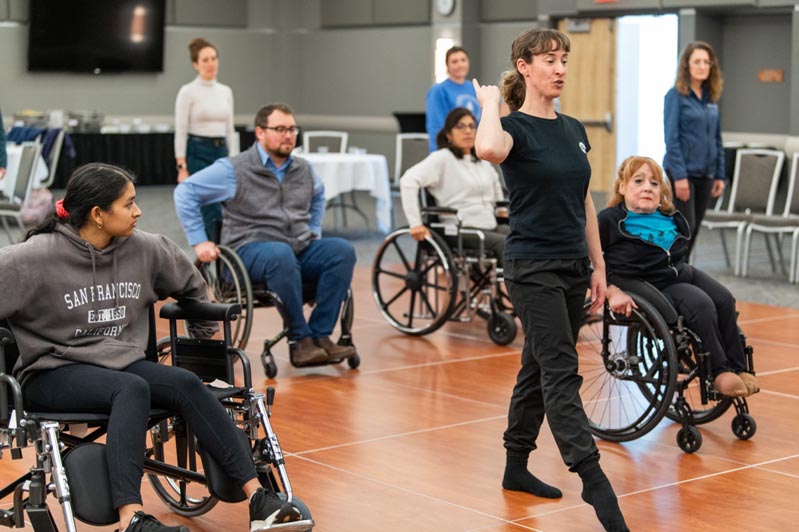
Falcon shared more about the Nov. 9 program with The Pulse.
What did NADIA hope students, faculty and staff would learn from this experience?
Our intention was for students, faculty and staff to gain a new appreciation for the different manners in which those with disabilities express themselves. The workshop was led by the founder of Dancing Wheels, Mary, and their director of outreach and community engagement, Sara. Each attendee was guided through choreography and taught how dance moves are translated for seated dancers. In addition, they had the chance to try out these adaptations using the wheelchairs provided. This experience was able to highlight the importance of acceptance, autonomy and communication to make sure that individuals of all abilities feel included.
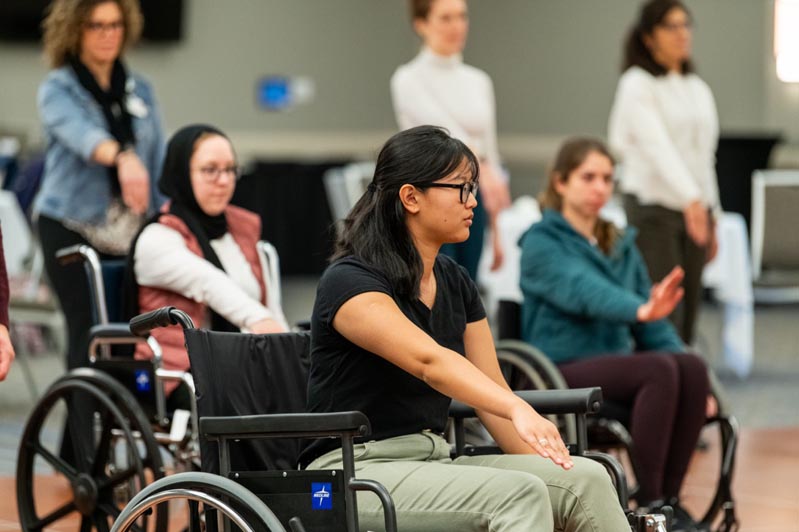
What was your favorite dance move?
My favorite dance move was using my hands to point and flex while those standing used their feet to point and flex. As simple as it may seem, it added precision and flair to our technique whilst dancing in sync.
What did attendees learn from this experience?
Shivani Agarwal (M1) commented on how it opened her eyes to how inaccessible the doctor’s office is for wheelchair users. This experience also taught her that our words can either reinforce stereotypes or challenge them. Lastly, she was surprised as to how much effort and concentration goes into maneuvering a wheelchair comfortably.
Margaret Kilbane (M1) said she believes that the knowledge she gained will allow her to become a better advocate for her future patients with disabilities. She learned how important it is to respect a patient’s autonomy, especially when offering assistance since many wheelchair users have varying levels of mobility and it is important to not assume about their abilities.
What events does NADIA have planned for the future?
We will be hosting a disability etiquette workshop where we will be dining in the dark on Jan. 17 with the help of the Akron Blind Center. This will simulate what it is like to be blind and help us better understand those who are visually challenged. This will require that attendees rely on their other senses when performing tasks with limited sight or complete vision loss.
